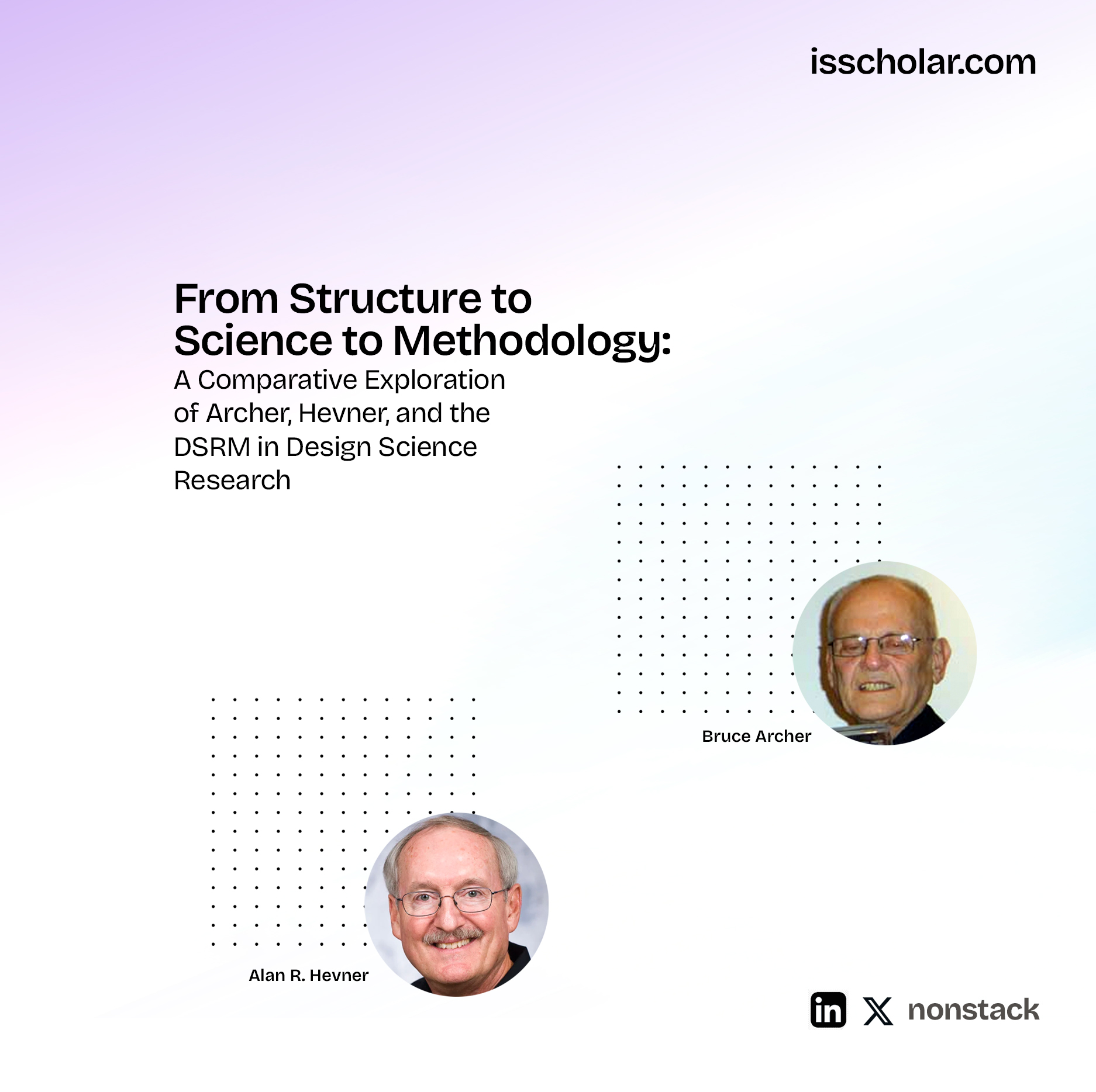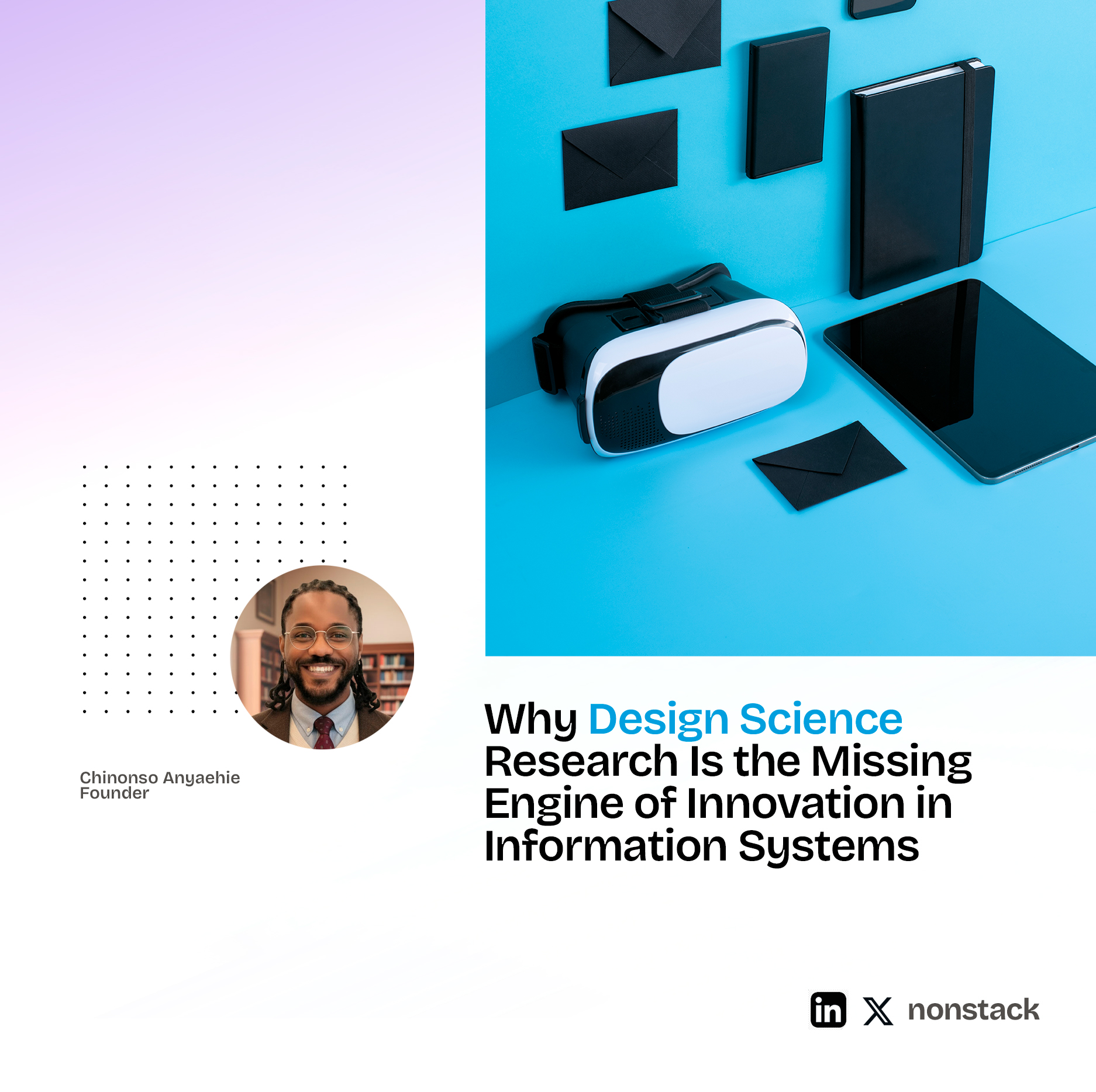Authors: Thomas W. Malone, Joanne Yates, and Robert I. Benjamin
Table of Contents
- Introduction
- Background and Purpose of the Study
- Transaction Cost Economics
- Understanding Hierarchies and Markets
- Production Costs vs. Coordination Costs
- Impact of Information Technology on Market Structures
- Reduction of Coordination Costs
- Effects on Production Costs
- Asset Specificity and Complexity of Product Description
- Definitions and Their Role in Transaction Costs
- Influence of IT on Asset Specificity and Complexity
- Electronic Markets and Electronic Hierarchies
- Definitions and Characteristics
- How IT Facilitates Both Structures
- The Move from Hierarchies to Markets
- Theoretical Predictions
- Graphical Analysis
- Case Studies Illustrating the Shift
- American Hospital Supply Corporation
- Airline Reservation Systems (SABRE and Apollo)
- Brokerage Effect vs. Integration Effect
- Definitions and Implications
- Strategic Trade-Offs for Firms
- The “Move to the Middle” Hypothesis
- Persistent Role of Hierarchies
- Situations Favoring Hierarchical Structures
- Industry Examples
- Strategic Implications for Organizations
- Adapting to Technological Changes
- Balancing Market and Hierarchical Relationships
- Conclusion
- Key Takeaways
- References
1. Introduction
Background and Purpose of the Study
“Electronic Markets and Electronic Hierarchies” is a seminal work that examines how advancements in Information Technology (IT) influence the structures of markets and organizations. The authors, Malone, Yates, and Benjamin, explore the ways in which IT reduces coordination costs, leading to significant changes in how economic transactions are organized. The paper provides theoretical frameworks and real-world examples to illustrate the shift from traditional hierarchical organizations to more market-oriented structures facilitated by IT.
2. Transaction Cost Economics
Understanding Hierarchies and Markets
Hierarchies:
- Definition: Organizational structures where control and decision-making are centralized. Transactions occur within the organization under unified ownership.
- Characteristics:
- Centralized Control: Decisions are made by a central authority.
- Standardized Procedures: Processes are uniform across the organization.
- Reduced Market Uncertainty: Internal transactions minimize exposure to market fluctuations.
Markets:
- Definition: Decentralized structures where transactions occur between independent entities through buying and selling in an open market.
- Characteristics:
- Decentralized Decision-Making: Independent buyers and sellers make their own choices.
- Competition: Multiple suppliers and buyers interact, influencing prices.
- Price Mechanism: Prices are determined by supply and demand.
Production Costs vs. Coordination Costs
Production Costs:
- Definition: Costs directly associated with the creation of goods or services (e.g., raw materials, labor, manufacturing overhead).
- In Hierarchies:
- May be higher due to less specialization and economies of scale.
- In Markets:
- Often lower as specialized firms achieve economies of scale by serving multiple clients.
Coordination Costs:
- Definition: Expenses related to coordinating economic activity, including searching for partners, negotiating contracts, and monitoring agreements.
- Components:
- Search and Information Costs: Finding suitable partners.
- Bargaining Costs: Negotiating terms of exchange.
- Policing and Enforcement Costs: Ensuring compliance with agreements.
Transaction Costs = Coordination Costs + Transaction Risks
- Transaction Risks: The potential for opportunistic behavior by partners, leading to costs like litigation or loss of investment.
3. Impact of Information Technology on Market Structures
Reduction of Coordination Costs
IT significantly lowers coordination costs by:
- Improving Information Access:
- Databases and Online Catalogs: Facilitate easy access to supplier and product information.
- Search Engines and Marketplaces: Reduce time and effort in finding partners.
- Enhancing Communication:
- Email and Messaging: Speed up negotiations and information exchange.
- Video Conferencing: Enables real-time discussions without geographical constraints.
- Automating Transactions:
- Electronic Data Interchange (EDI): Streamlines ordering and invoicing processes.
- Electronic Funds Transfer (EFT): Simplifies payment transactions.
Effects on Production Costs
While IT has a more pronounced effect on coordination costs, it also impacts production costs by:
- Enabling Automation:
- Robotics and Manufacturing Systems: Increase efficiency and reduce labor costs.
- Facilitating Design and Development:
- Computer-Aided Design (CAD): Speeds up product development cycles.
- Enhancing Supply Chain Management:
- Just-In-Time (JIT) Systems: Reduce inventory holding costs.
Conclusion: IT reduces coordination costs more significantly than production costs, leading to changes in organizational structures and market dynamics.
4. Asset Specificity and Complexity of Product Description
Definitions and Their Role in Transaction Costs
Asset Specificity:
- Definition: The degree to which an asset can be redeployed to alternative uses and by alternative users without sacrifice of productive value.
- Types:
- Site Specificity: Assets are located near a particular partner.
- Physical Asset Specificity: Equipment designed for a specific transaction.
- Human Asset Specificity: Skills or knowledge developed for a specific relationship.
Impact on Transactions:
- High asset specificity increases transaction risks and coordination costs due to potential opportunistic behavior.
- Encourages hierarchical governance to safeguard investments.
Complexity of Product Description:
- Definition: The difficulty in specifying, communicating, and understanding the attributes of a product.
- Impact on Transactions:
- Complex products require detailed communication and understanding.
- Increases coordination costs due to the need for extensive negotiation and contracting.
Influence of IT on Asset Specificity and Complexity
Reduction in Asset Specificity:
- Standardization and Modularity:
- IT enables the creation of modular components that can be used in various contexts.
- Digitalization:
- Assets become digital (e.g., software), making them more flexible and less specific to a single transaction.
Simplification of Product Complexity:
- Enhanced Communication Tools:
- Detailed product information can be shared easily (e.g., online catalogs, 3D models).
- Decision Support Systems:
- Help buyers understand complex products through simulations and analytics.
Result: IT decreases asset specificity and simplifies complex product descriptions, reducing coordination costs and facilitating market transactions.
5. Electronic Markets and Electronic Hierarchies
Definitions and Characteristics
Electronic Markets:
- Definition: Online platforms where buyers and sellers interact directly, facilitated by IT.
- Characteristics:
- Increased Transparency: Real-time information on prices and availability.
- Wider Reach: Access to a global pool of suppliers and customers.
- Lower Entry Barriers: Easier for small firms to participate.
Electronic Hierarchies:
- Definition: IT-enabled networks within an organization or between closely linked organizations.
- Characteristics:
- Integrated Systems: Shared databases and applications.
- Streamlined Processes: Automated workflows and communication channels.
- Control and Coordination: Centralized management of transactions.
How IT Facilitates Both Structures
- For Markets:
- Online Marketplaces: Platforms like eBay and Alibaba connect numerous buyers and sellers.
- Price Comparison Tools: Enable consumers to easily compare offerings.
- For Hierarchies:
- Enterprise Resource Planning (ERP) Systems: Integrate internal processes.
- Supply Chain Integration: Close coordination with suppliers through shared IT systems.
Implication: IT is a double-edged sword that can both decentralize transactions (favoring markets) and strengthen centralized control (favoring hierarchies).
6. The Move from Hierarchies to Markets
Theoretical Predictions
Malone, Yates, and Benjamin predict that as IT reduces coordination costs:
- Organizations will increasingly rely on market mechanisms.
- Electronic markets will become more prevalent than electronic hierarchies.
- Traditional hierarchies will face pressure to adopt more market-like structures.
Graphical Analysis
Axes:
- Horizontal Axis: Asset Specificity (Low to High)
- Vertical Axis: Complexity of Product Description (Low to High)
Zones:
- Market Zone: Low asset specificity and low complexity favor market transactions.
- Hierarchy Zone: High asset specificity and high complexity favor hierarchical governance.
Effect of IT:
- Shift of Asset Specificity Line to the Right:
- IT reduces the need for specific investments.
- Shift of Complexity Line Upward:
- IT simplifies complex product descriptions.
Result: The market zone expands, and the hierarchy zone shrinks, indicating a shift towards market structures.
7. Case Studies Illustrating the Shift
American Hospital Supply Corporation (AHSC)
Initial Structure:
- AHSC had a hierarchical relationship with hospitals, controlling the supply chain.
- Hospitals were dependent on AHSC’s systems for inventory management.
Introduction of IT:
- AHSC implemented an electronic ordering system accessible to hospitals.
- This system increased efficiency but also locked hospitals into AHSC’s network.
Evolution:
- Buyer Lock-In:
- Hospitals faced high switching costs due to reliance on AHSC’s proprietary system.
- Emergence of Competitors:
- Other suppliers developed their own electronic systems.
- Competitors offered better prices and technology.
- Shift to Biased Market:
- AHSC allowed access to competitors but controlled the platform, favoring themselves.
- Regulatory Intervention:
- Legal pressures forced AHSC to open its system.
- Move to Open Market:
- An independent electronic market emerged, reducing AHSC’s control.
- Outcome:
- Hospitals gained access to multiple suppliers, increasing competition and reducing costs.
Airline Reservation Systems (SABRE and Apollo)
Initial Structure:
- Airlines like American Airlines (SABRE) and United Airlines (Apollo) developed reservation systems.
- Travel agents used these systems, which favored the airlines that owned them.
Market Pressure:
- Other airlines demanded inclusion in the reservation systems.
- Travel agents wanted unbiased access to flight information.
Regulatory Intervention:
- Government agencies required airlines to provide equal access and unbiased information.
- Systems had to display flights from all airlines fairly.
Shift to Open Market:
- Systems like SABRE evolved into independent entities (e.g., Travelocity).
- Provided a neutral platform for airlines and travel agents.
Outcome:
- Increased competition among airlines.
- Consumers benefited from transparent pricing and options.
8. Brokerage Effect vs. Integration Effect
Definitions and Implications
Brokerage Effect:
- Definition: Benefits derived from using IT to facilitate market transactions by reducing coordination costs.
- Implications:
- Increased Competition: Buyers can easily compare multiple suppliers.
- Lower Prices: Competition drives prices down.
- Flexibility: Buyers can switch suppliers with ease.
Integration Effect:
- Definition: Benefits from using IT to strengthen relationships with specific suppliers through system integration.
- Implications:
- Operational Efficiency: Streamlined processes and reduced redundancies.
- Customized Services: Suppliers can offer tailored solutions.
- Trust and Reliability: Strong relationships reduce transaction risks.
Strategic Trade-Offs for Firms
- Balancing Brokerage and Integration:
- Too Much Brokerage: May lead to superficial relationships and lack of supplier commitment.
- Too Much Integration: May result in dependency and reduced bargaining power.
- Factors to Consider:
- Nature of the Product: Standardized vs. customized products.
- Market Dynamics: Stability vs. volatility of the market.
- Organizational Strategy: Cost leadership vs. differentiation.
The “Move to the Middle” Hypothesis
- Concept: Firms will adopt a hybrid approach, engaging in partnerships that balance the benefits of markets and hierarchies.
- Implementation:
- Selective Supplier Relationships: Working closely with a few key suppliers.
- Use of IT: To manage relationships and coordinate activities efficiently.
- Outcome:
- Optimized Transaction Costs: Achieving economies of scale while maintaining flexibility.
- Enhanced Competitiveness: Leveraging both cost savings and innovation from suppliers.
9. Persistent Role of Hierarchies
Situations Favoring Hierarchical Structures
- High Asset Specificity:
- Investments are specialized and cannot be easily repurposed.
- Complex Products and Services:
- Require intensive coordination and communication.
- Risk Management:
- Hierarchies reduce the risk of opportunistic behavior.
- Regulatory Compliance:
- Certain industries require strict control over processes.
Industry Examples
Defense Industry:
- Characteristics:
- High asset specificity and complex products.
- Strict security and compliance requirements.
- Governance:
- Close collaboration between government and contractors.
- Long-term contracts and integrated project teams.
Aerospace Sector:
- Companies like Boeing and Airbus:
- Manage complex supply chains with strategic suppliers.
- Use hierarchical structures to ensure quality and coordination.
Pharmaceutical Industry:
- Drug Development:
- Requires extensive R&D and clinical trials.
- Partnerships and alliances are managed hierarchically.
Automotive Industry:
- Supply Chain Management:
- Manufacturers work closely with Tier 1 suppliers.
- Integration ensures just-in-time delivery and quality control.
10. Strategic Implications for Organizations
Adapting to Technological Changes
- Invest in IT Infrastructure:
- To leverage both brokerage and integration benefits.
- Develop Flexible Strategies:
- Be prepared to shift between market and hierarchical structures as needed.
- Focus on Core Competencies:
- Outsource non-core activities to specialized market players.
Balancing Market and Hierarchical Relationships
- Assess Transaction Characteristics:
- Consider asset specificity and product complexity.
- Cultivate Strategic Partnerships:
- Build strong relationships where integration adds value.
- Leverage Electronic Markets:
- Use online platforms to access a wider range of suppliers and customers.
Key Actions:
- Enhance Agility: Be responsive to market changes enabled by IT.
- Manage Risks: Implement safeguards in both market and hierarchical transactions.
- Drive Innovation: Use IT to collaborate and innovate with partners.
11. Conclusion
“Electronic Markets and Electronic Hierarchies” highlights the transformative impact of Information Technology on organizational structures and market dynamics. IT reduces coordination costs, leading to a shift towards market-based transactions. However, the persistence of asset specificity and product complexity means that hierarchies remain relevant in certain contexts. Organizations must strategically balance the brokerage and integration effects of IT to optimize their operations. By understanding these dynamics, firms can adapt to technological changes, enhance competitiveness, and achieve long-term success.
12. Key Takeaways
- IT Reduces Coordination Costs:
- Facilitates easier and more efficient market transactions.
- Shift Towards Market Structures:
- Organizations increasingly rely on electronic markets.
- Asset Specificity and Complexity Matter:
- High levels favor hierarchical governance.
- Brokerage vs. Integration:
- Firms must balance the benefits of both to optimize relationships.
- Persistent Role of Hierarchies:
- Remain essential for complex and specialized transactions.
- Strategic Use of IT:
- Enables firms to navigate between markets and hierarchies effectively.
- Adapting Strategies:
- Organizations should be flexible and responsive to technological advancements.
13. References
- Malone, T. W., Yates, J., & Benjamin, R. I. (1987). “Electronic Markets and Electronic Hierarchies.” Communications of the ACM, 30(6), 484-497.
- Williamson, O. E. (1975). Markets and Hierarchies: Analysis and Antitrust Implications. Free Press.
- Clemons, E. K., Reddi, S. P., & Row, M. C. (1993). “The Impact of Information Technology on the Organization of Economic Activity: The ‘Move to the Middle’ Hypothesis.” Journal of Management Information Systems, 10(2), 9-35.
- Porter, M. E. (1985). Competitive Advantage: Creating and Sustaining Superior Performance. Free Press.
- Simon, H. A. (1976). Administrative Behavior: A Study of Decision-Making Processes in Administrative Organizations. Free Press.
Here is another version of this article written differently. My plan was to keep these two versions for easy comparison
Electronic Markets and Electronic Hierarchies: The Impact of Information Technology on Organizational Structures and Market Dynamics
Authors: Thomas W. Malone, Joanne Yates, and Robert I. Benjamin
Table of Contents
- Introduction
- Understanding Transaction Cost Economics (TCE)
- Hierarchies and Markets: Control vs. Market Forces
- Production Costs vs. Coordination Costs
- The Role of Information Technology in Reducing Coordination Costs
- Asset Specificity and Product Complexity in Transaction Costs
- Electronic Markets and Electronic Hierarchies Defined
- Shifts from Hierarchies to Markets: Theoretical Predictions and Case Studies
- The Brokerage and Integration Effects of IT
- Strategic Implications for Firms: The “Move to the Middle” Hypothesis
- Persistent Role of Hierarchies in High Asset Specificity and Complexity Contexts
- Conclusion: IT’s Future Impact on Organizational and Market Structures
- References
1. Introduction
In their seminal paper Electronic Markets and Electronic Hierarchies, Malone, Yates, and Benjamin explore how information technology (IT) transforms economic structures, shifting firms from hierarchical organization to market-based coordination. By reducing coordination costs and improving market transparency, IT enables new governance structures that were previously unsustainable due to high transaction costs. This guide provides an in-depth analysis of their findings, blending theoretical frameworks with practical insights into the strategic implications of IT advancements.
2. Understanding Transaction Cost Economics (TCE)
At the heart of Malone, Yates, and Benjamin’s analysis lies Transaction Cost Economics (TCE). TCE distinguishes between two major organizational structures—hierarchies and markets—based on the costs associated with production, coordination, and transaction risks:
- Hierarchies minimize coordination costs by centralizing control but often face higher production costs due to limited economies of scale.
- Markets leverage competitive forces to lower production costs but encounter higher coordination costs as buyers and sellers negotiate, search for options, and monitor agreements.
This framework positions asset specificity and product complexity as the critical determinants in choosing between hierarchies and markets.
3. Hierarchies and Markets: Control vs. Market Forces
In hierarchical structures, transactions occur under centralized control. Buyers lack flexibility and choice due to limited alternatives or highly specific products, which creates a control-oriented relationship. Conversely, in a market structure, buyers have access to multiple suppliers, fostering a competitive environment where market forces (demand and supply) determine price, quality, and terms of exchange.
- Example of Hierarchy: A supplier dictates the terms and prices for a unique product, leaving buyers with limited negotiation power.
- Example of Market: A buyer selects from multiple suppliers, encouraging price competition and quality improvements.
4. Production Costs vs. Coordination Costs
Production Costs refer to the expenses directly associated with creating goods or services. In hierarchical structures, production costs tend to be high due to limited specialization and smaller economies of scale, whereas markets reduce production costs by allowing specialized firms to serve multiple clients.
Coordination Costs are expenses related to managing economic activity, including searching for suppliers, negotiating, and monitoring. Hierarchies minimize coordination costs through central control, while markets experience higher coordination costs as buyers interact with various suppliers.
- Transaction Costs = Coordination Costs + Transaction Risks
- Transaction Risks: The potential for opportunistic behavior, such as price manipulation or poor-quality goods, increases transaction costs in markets, making hierarchies a more stable option when these risks are high.
5. The Role of Information Technology in Reducing Coordination Costs
Malone, Yates, and Benjamin emphasize that IT profoundly reduces coordination costs, thus enabling markets to compete with hierarchies. By enhancing information access, communication, and automation, IT lowers transaction costs, making market-based structures more viable.
Key Contributions of IT:
- Improved Information Access: Online catalogs, databases, and search engines provide buyers with easy access to supplier and product information, enabling better decision-making.
- Enhanced Communication: Tools like email, video conferencing, and collaborative platforms speed up negotiations and facilitate real-time discussions across geographies.
- Automated Transactions: Technologies like Electronic Data Interchange (EDI) and Electronic Funds Transfer (EFT) streamline ordering and payments, further reducing transaction costs.
These IT-driven efficiencies shift the balance towards markets by making coordination less costly and more scalable.
6. Asset Specificity and Product Complexity in Transaction Costs
Two critical factors in TCE, asset specificity and product complexity, influence the decision between market and hierarchical structures:
- Asset Specificity: This refers to how uniquely an asset is tailored to a particular transaction. High asset specificity, such as specialized machinery for a specific buyer, increases transaction risks and makes hierarchical control preferable.
- Product Complexity: The difficulty in specifying, understanding, and comparing a product. High complexity increases coordination costs, pushing firms toward hierarchical structures where long-term relationships with fewer suppliers enable detailed, ongoing communication.
IT can reduce asset specificity through standardization and modularization, making assets more adaptable. Additionally, IT simplifies complex products by facilitating comprehensive product comparisons, which can shift complex transactions toward market-based relationships.
7. Electronic Markets and Electronic Hierarchies Defined
Malone, Yates, and Benjamin define electronic markets and electronic hierarchies as IT-enabled structures with unique characteristics:
- Electronic Markets: These platforms connect buyers and sellers directly, often globally, providing greater transparency, lower entry barriers, and real-time price comparisons.
- Electronic Hierarchies: These are tightly integrated systems within or between firms that centralize control and streamline workflows through shared databases and ERP systems, reducing redundancy and improving coordination.
While electronic markets emphasize transparency and accessibility, electronic hierarchies prioritize efficiency through controlled, integrated systems.
8. Shifts from Hierarchies to Markets: Theoretical Predictions and Case Studies
The authors predict that as IT continues to reduce coordination costs, traditional hierarchies will evolve towards market-like structures.
Case Studies:
- American Hospital Supply Corporation (AHSC): AHSC’s proprietary electronic ordering system initially locked hospitals into a hierarchical relationship. As IT improved, competitors emerged, and AHSC transitioned to a more open system, encouraging a market structure.
- Airline Reservation Systems (SABRE and Apollo): These reservation systems, initially biased towards their parent airlines, evolved into open electronic markets due to regulatory intervention, eventually becoming independent platforms like Travelocity.
9. The Brokerage and Integration Effects of IT
Brokerage Effect: IT facilitates market-based transactions by enabling buyers to compare prices and products across suppliers, reducing search costs. This brokerage effect allows firms to take advantage of market competition, securing lower prices and a greater selection.
Integration Effect: IT also fosters integration by enabling firms to share systems and data with specific suppliers, reducing inventory costs, and allowing just-in-time (JIT) deliveries. Integration benefits firms by promoting stable, long-term relationships with key suppliers.
Firms face a trade-off between brokerage (market competition) and integration (efficiency through partnerships). IT enables both effects, and firms must choose their optimal balance based on their strategic goals.
10. Strategic Implications for Firms: The “Move to the Middle” Hypothesis
The Move to the Middle Hypothesis proposes a balanced approach where firms establish strong relationships with a select number of suppliers. This model combines the flexibility of markets with the reliability of hierarchies, allowing firms to harness both brokerage and integration benefits.
A firm with too many suppliers may lose integration benefits as suppliers are less incentivized to form a dedicated partnership. Conversely, a firm with too few suppliers may lack competitive leverage. Finding this balance allows firms to achieve optimal transaction efficiency while retaining flexibility.
11. Persistent Role of Hierarchies in High Asset Specificity and Complexity Contexts
While IT reduces coordination costs, hierarchies remain essential for high-asset specificity and complex transactions. These situations benefit from centralized control, which reduces risks associated with opportunistic behavior and high transaction costs.
Examples:
- Defense Industry: Due to high asset specificity and strict security, defense contracts are often hierarchical.
- Automotive and Aerospace: Manufacturing complex, customized products like aircraft necessitates close, integrated supplier relationships.
- Pharmaceutical Industry: Drug development involves extensive coordination and regulatory compliance, making long-term hierarchical relationships more efficient.
12. Conclusion: IT’s Future Impact on Organizational and Market Structures
As IT advances, it will continue to reduce coordination costs, promoting market-based structures over traditional hierarchies. However, high-asset specificity and product complexity will still necessitate hierarchical structures in some industries. Organizations that effectively balance the brokerage and integration effects will be better positioned to navigate competitive and dynamic markets, using IT to lower costs, improve efficiency, and foster strategic partnerships.
Malone, Yates, and Benjamin’s work remains relevant as IT’s influence expands, reshaping the economic landscape and forcing organizations to re-evaluate governance structures. The paper offers a framework for firms to leverage technology in optimizing transaction costs, ultimately advancing competitiveness in a digital economy.
13. References
- Malone, T. W., Yates, J., & Benjamin, R. I. (1987). “Electronic Markets and Electronic Hierarchies.” Communications of the ACM, 30(6), 484-497.
- Williamson, O. E. (1975). Markets and Hierarchies: Analysis and Antitrust Implications. Free Press.
- Clemons, E. K., Reddi, S. P., & Row, M. C. (1993).










Leave a Reply